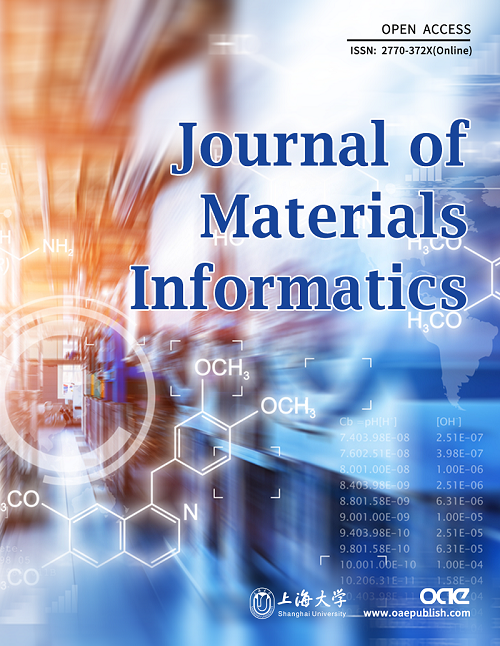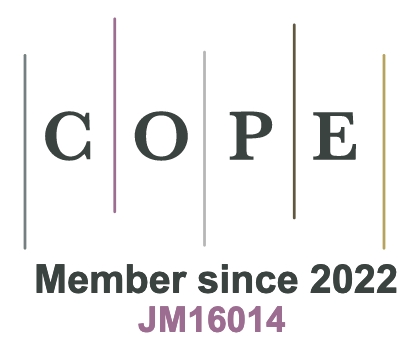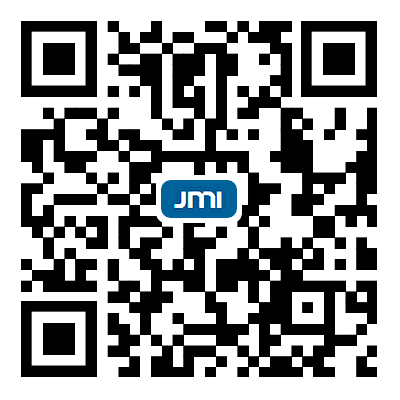REFERENCES
2. Hart GLW, Mueller T, Toher C, Curtarolo S. Machine learning for alloys. Nat Rev Mater 2021;6:730-55.
3. Agrawal A, Choudhary A. Perspective: materials informatics and big data: realization of the "fourth paradigm" of science in materials science. APL Mater 2016;4:053208.
4. Kalidindi SR, Niezgoda SR, Salem AA. Microstructure informatics using higher-order statistics and efficient data-mining protocols. JOM 2011;63:34-41.
5. Kalidindi SR, De Graef M. Materials data science: current status and future outlook. Annu Rev Mater Res 2015;45:171-93.
6. Arróyave R, Mcdowell DL. Systems approaches to materials design: past, present, and future. Annu Rev Mater Res 2019;49:103-26.
7. Hu X, Li J, Wang Z, Wang J. A microstructure-informatic strategy for Vickers hardness forecast of austenitic steels from experimental data. Materials & Design 2021;201:109497.
8. Molkeri A, Khatamsaz D, Couperthwaite R, et al. On the importance of microstructure information in materials design: PSP vs PP. Acta Materialia 2022;223:117471.
9. Khatavkar N, Swetlana S, Singh AK. Accelerated prediction of Vickers hardness of Co- and Ni-based superalloys from microstructure and composition using advanced image processing techniques and machine learning. Acta Materialia 2020;196:295-303.
10. Shen C, Wang C, Wei X, Li Y, van der Zwaag S, Xu W. Physical metallurgy-guided machine learning and artificial intelligent design of ultrahigh-strength stainless steel. Acta Materialia 2019;179:201-14.
11. Shin D, Yamamoto Y, Brady M, Lee S, Haynes J. Modern data analytics approach to predict creep of high-temperature alloys. Acta Materialia 2019;168:321-30.
12. Peng J, Yamamoto Y, Hawk JA, Lara-curzio E, Shin D. Coupling physics in machine learning to predict properties of high-temperatures alloys. npj Comput Mater 2020:6.
13. Hu X, Wang J, Wang Y, et al. Two-way design of alloys for advanced ultra supercritical plants based on machine learning. Computational Materials Science 2018;155:331-9.
14. Niezgoda SR, Kanjarla AK, Kalidindi SR. Novel microstructure quantification framework for databasing, visualization, and analysis of microstructure data. Integr Mater Manuf Innov 2013;2:54-80.
15. Sangid MD, Ravi P, Prithivirajan V, Miller NA, Kenesei P, Park J. ICME approach to determining critical pore size of IN718 produced by selective laser melting. JOM 2020;72:465-74.
16. Zinovieva O, Romanova V, Balokhonov R. Effects of scanning pattern on the grain structure and elastic properties of additively manufactured 316L austenitic stainless steel. Materials Science and Engineering: A 2022;832:142447.
17. Popova E, Rodgers TM, Gong X, Cecen A, Madison JD, Kalidindi SR. Process-structure linkages using a data science approach: application to simulated additive manufacturing data. Integr Mater Manuf Innov 2017;6:54-68.
18. Yabansu YC, Rehn V, Hötzer J, Nestler B, Kalidindi SR. Application of Gaussian process autoregressive models for capturing the time evolution of microstructure statistics from phase-field simulations for sintering of polycrystalline ceramics. Modelling Simul Mater Sci Eng 2019;27:084006.
19. Latypov MI, Kühbach M, Beyerlein IJ, et al. Application of chord length distributions and principal component analysis for quantification and representation of diverse polycrystalline microstructures. Materials Characterization 2018;145:671-85.
20. Turner DM, Niezgoda SR, Kalidindi SR. Efficient computation of the angularly resolved chord length distributions and lineal path functions in large microstructure datasets. Modelling Simul Mater Sci Eng 2016;24:075002.
21. Yucel B, Yucel S, Ray A, Duprez L, Kalidindi SR. Mining the correlations between optical micrographs and mechanical properties of cold-rolled HSLA steels using machine learning approaches. Integr Mater Manuf Innov 2020;9:240-56.
22. Niezgoda S, Fullwood D, Kalidindi S. Delineation of the space of 2-point correlations in a composite material system. Acta Materialia 2008;56:5285-92.
23. Cecen A, Yabansu YC, Kalidindi SR. A new framework for rotationally invariant two-point spatial correlations in microstructure datasets. Acta Materialia 2018;158:53-64.
24. Fullwood DT, Niezgoda SR, Adams BL, Kalidindi SR. Microstructure sensitive design for performance optimization. Progress in Materials Science 2010;55:477-562.
25. Brough DB, Wheeler D, Warren JA, Kalidindi SR. Microstructure-based knowledge systems for capturing process-structure evolution linkages. Current Opinion in Solid State and Materials Science 2017;21:129-40.
26. Fullwood DT, Niezgoda SR, Kalidindi SR. Microstructure reconstructions from 2-point statistics using phase-recovery algorithms. Acta Materialia 2008;56:942-8.
27. Bostanabad R, Zhang Y, Li X, et al. Computational microstructure characterization and reconstruction: review of the state-of-the-art techniques. Progress in Materials Science 2018;95:1-41.
28. Niezgoda SR, Turner DM, Fullwood DT, Kalidindi SR. Optimized structure based representative volume element sets reflecting the ensemble-averaged 2-point statistics. Acta Materialia 2010;58:4432-45.
29. Khosravani A, Cecen A, Kalidindi SR. Development of high throughput assays for establishing process-structure-property linkages in multiphase polycrystalline metals: Application to dual-phase steels. Acta Materialia 2017;123:55-69.
30. Steinmetz P, Yabansu YC, Hötzer J, Jainta M, Nestler B, Kalidindi SR. Analytics for microstructure datasets produced by phase-field simulations. Acta Materialia 2016;103:192-203.
31. Yabansu YC, Iskakov A, Kapustina A, Rajagopalan S, Kalidindi SR. Application of Gaussian process regression models for capturing the evolution of microstructure statistics in aging of nickel-based superalloys. Acta Materialia 2019;178:45-58.
32. Iskakov A, Yabansu YC, Rajagopalan S, Kapustina A, Kalidindi SR. Application of spherical indentation and the materials knowledge system framework to establishing microstructure-yield strength linkages from carbon steel scoops excised from high-temperature exposed components. Acta Materialia 2018;144:758-67.
33. Gorgannejad S, Reisi Gahrooei M, Paynabar K, Neu R. Quantitative prediction of the aged state of Ni-base superalloys using PCA and tensor regression. Acta Materialia 2019;165:259-69.
34. Yabansu YC, Steinmetz P, Hötzer J, Kalidindi SR, Nestler B. Extraction of reduced-order process-structure linkages from phase-field simulations. Acta Materialia 2017;124:182-94.
35. Tewari A, Gokhale A, Spowart J, Miracle D. Quantitative characterization of spatial clustering in three-dimensional microstructures using two-point correlation functions. Acta Materialia 2004;52:307-19.
36. Jung J, Yoon JI, Park HK, Kim JY, Kim HS. Bayesian approach in predicting mechanical properties of materials: application to dual phase steels. Materials Science and Engineering: A 2019;743:382-90.
37. Gupta A, Cecen A, Goyal S, Singh AK, Kalidindi SR. Structure-property linkages using a data science approach: application to a non-metallic inclusion/steel composite system. Acta Materialia 2015;91:239-54.
39. Fast T, Wodo O, Ganapathysubramanian B, Kalidindi SR. Microstructure taxonomy based on spatial correlations: application to microstructure coarsening. Acta Materialia 2016;108:176-85.
40. Kunselman C, Attari V, Mcclenny L, Braga-neto U, Arroyave R. Semi-supervised learning approaches to class assignment in ambiguous microstructures. Acta Materialia 2020;188:49-62.
41. Kitahara AR, Holm EA. Microstructure cluster analysis with transfer learning and unsupervised learning. Integr Mater Manuf Innov 2018;7:148-56.
42. Liu Q, Wu H, Paul MJ, et al. Machine-learning assisted laser powder bed fusion process optimization for AlSi10Mg: new microstructure description indices and fracture mechanisms. Acta Materialia 2020;201:316-28.
43. Choudhury A, Yabansu YC, Kalidindi SR, Dennstedt A. Quantification and classification of microstructures in ternary eutectic alloys using 2-point spatial correlations and principal component analyses. Acta Materialia 2016;110:131-41.
44. Wu Q, Wang Z, Hu X, et al. Uncovering the eutectics design by machine learning in the Al-Co-Cr-Fe-Ni high entropy system. Acta Materialia 2020;182:278-86.
45. Zheng T, Hu X, He F, et al. Tailoring nanoprecipitates for ultra-strong high-entropy alloys via machine learning and prestrain aging. Journal of Materials Science & Technology 2021;69:156-67.
46. Nelson J, Sanvito S. Predicting the Curie temperature of ferromagnets using machine learning. Phys Rev Materials 2019:3.
47. Mukhamedov BO, Karavaev KV, Abrikosov IA. Machine learning prediction of thermodynamic and mechanical properties of multicomponent Fe-Cr-based alloys. Phys Rev Materials 2021:5.
48. Hu X, Zhao J, Li J, Wang Z, Chen Y, Wang J. Global-oriented strategy for searching ultrastrength martensitic stainless steels. Advcd Theory and Sims 2022;5:2100411.
49. Masuyama F. Advances in physical metallurgy and processing of steels. ISIJ International 2001;41:612-25.
50. Konadu DS, Pistorius PGH. Investigation of formation of precipitates and solidification temperatures of ferritic stainless steels using differential scanning calorimetry and Thermo-Calc simulation. S
51. Rojas D, Garcia J, Prat O, Sauthoff G, Kaysser-pyzalla A. 9%Cr heat resistant steels: alloy design, microstructure evolution and creep response at 650℃. Materials Science and Engineering: A 2011;528:5164-76.
52. Knezevic V, Sauthoff G, Vilk J, et al. Martensitic/Ferritic super heat-resistant 650.DEG.C. steels. Design and testing of model alloys. ISIJ International 2002;42:1505-14.
53. Li X, Kuang W, Zhang J, Zhou Q, Wang H. Application of the thermodynamic extremal principle to massive transformations in Fe-C alloys. Metall and Mat Trans A 2018;49:4484-94.
54. Zhong Z, Gu Y, Yuan Y. Microstructural stability and mechanical properties of a newly developed Ni-Fe-base superalloy. Materials Science and Engineering: A 2015;622:101-7.
55. Otsu N. A threshold selection method from gray-level histograms. IEEE Trans Syst, Man, Cybern 1979;9:62-6.
56. van der Walt S, Schönberger JL, Nunez-Iglesias J, et al. Scikit-image: image processing in python. PeerJ 2014;2:e453.
58. J Mach Learn Res 2011; 12: 2825-28306. Available from: https://www.jmlr.org/papers/volume12/pedregosa11a/pedregosa11a.pdf [Last accessed on 20 Mar 2022]]]>.
59. Li J, Wang Z, Wang Y, Wang J. Phase-field study of competitive dendritic growth of converging grains during directional solidification. Acta Materialia 2012;60:1478-93.
60. Guo C, Li J, Yu H, Wang Z, Lin X, Wang J. Branching-induced grain boundary evolution during directional solidification of columnar dendritic grains. Acta Materialia 2017;136:148-63.
61. Wang Y, Li J, Yang H, et al. The formation mechanism of special globular surface grain during the solidification of laser surface remelted near β titanium alloys. Computational Materials Science 2021;191:110353.
62. Eiken J, Böttger B, Steinbach I. Multiphase-field approach for multicomponent alloys with extrapolation scheme for numerical application. Phys Rev E Stat Nonlin Soft Matter Phys 2006;73:066122.
63. Farzadi A, Do-quang M, Serajzadeh S, Kokabi AH, Amberg G. Phase-field simulation of weld solidification microstructure in an Al-Cu alloy. Modelling Simul Mater Sci Eng 2008;16:065005.
64. Wang F, Williams S, Rush M. Morphology investigation on direct current pulsed gas tungsten arc welded additive layer manufactured Ti6Al4V alloy. Int J Adv Manuf Technol 2011;57:597-603.
65. Zinovieva O, Zinoviev A, Romanova V, Balokhonov R. Three-dimensional analysis of grain structure and texture of additively manufactured 316L austenitic stainless steel. Additive Manufacturing 2020;36:101521.
66. Schwarze C, Darvishi Kamachali R, Kühbach M, et al. Computationally efficient phase-field simulation studies using RVE sampling and statistical analysis. Computational Materials Science 2018;147:204-16.
67. Wang Y, Li J, Zhang L, Wang Z, Wang J. Phase-field study on the effect of initial particle aggregation on the transient coarsening behaviors. Modelling Simul Mater Sci Eng 2020;28:075007.








